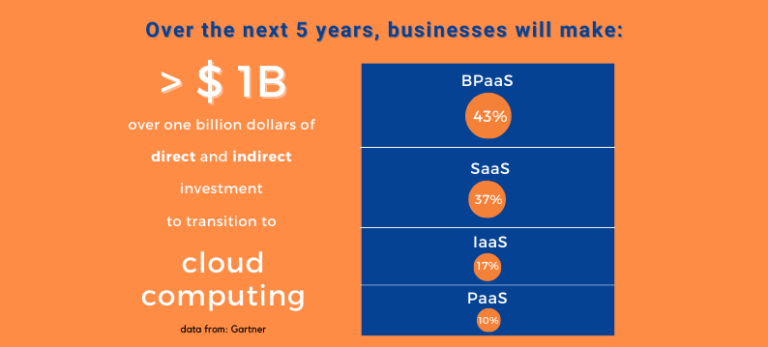As enterprises grow, their IT infrastructure and demands grow exponentially. With this growth comes an increase in the complexity of managing IT resources, data, applications, security, and compliance. Scaling IT operations without overwhelming internal teams is a significant challenge for most enterprises. IT teams are expected to support more users, manage a growing number of devices and applications, maintain system uptime, and ensure data security — all without a proportionate increase in resources or personnel. The consequences of inadequate scalability can be costly, leading to inefficiencies, downtime, and reduced productivity.
This is where CuberAI steps in. CuberAI’s cutting-edge automation tools offer scalable solutions to help IT teams manage increased workloads with ease, reducing manual effort and allowing enterprises to grow without compromising on IT efficiency. In this blog, we will explore the scalability challenges that enterprise IT departments face, and explain how CuberAI’s automation tools are empowering teams to overcome these hurdles, all while citing data and statistics to validate the impact of automation on enterprise IT operations.
The Scalability Challenges in Enterprise IT
The challenges of scalability in enterprise IT are multidimensional, ranging from infrastructure and application management to security and compliance concerns. According to a 2022 Deloitte survey, 70% of IT leaders cite scalability as a top priority, yet many struggle with the complexity of scaling operations. Here are some key areas where scaling becomes problematic as enterprises expand:
1. Infrastructure Growth and Management
As businesses grow, their IT infrastructure needs to grow with them. This includes servers, storage, networking equipment, and cloud resources. Managing a rapidly expanding infrastructure becomes increasingly difficult without the right tools and automation in place. According to IDC, enterprises saw an 80% increase in infrastructure costs between 2018 and 2022, driven largely by the need to scale operations to support growth.
2. Increased Workload on IT Teams
With more users, applications, and devices comes an increased workload for IT teams. Whether it’s provisioning new servers, deploying updates, or managing security incidents, IT teams are expected to handle more tasks with the same or even fewer resources. A report by Gartner found that 45% of IT teams in large enterprises are struggling to meet the demands of scaling, often leading to burnout and reduced operational efficiency.
3. Security and Compliance Complexity
As IT environments scale, so do the security risks. With more devices, more endpoints, and more data flowing through the system, the attack surface grows. Additionally, ensuring compliance with regulatory standards across multiple regions and industries becomes more complex. In a survey by McAfee, 85% of enterprises reported that scaling their security operations effectively was one of their biggest challenges, especially as regulations such as GDPR, CCPA, and industry-specific rules become more stringent.
4. Application Deployment and Maintenance
Scaling application deployment and maintenance becomes increasingly difficult as enterprises expand their operations. Managing version control, patches, updates, and integrations across a growing network of applications can be a logistical nightmare. A study by Forrester highlighted that enterprises experienced 50% more downtime due to inefficient application management processes as they scaled operations.
How CuberAI Empowers Enterprise IT Teams
CuberAI’s automation tools are designed to address these scalability challenges head-on, providing seamless solutions that empower IT teams to manage growing workloads without increasing their burden. Below are the key ways CuberAI’s automation tools are helping enterprises scale effectively:
1. Automated Infrastructure Management
One of the most significant challenges in scaling enterprise IT operations is managing a rapidly growing infrastructure. CuberAI automates infrastructure management tasks such as server provisioning, resource allocation, and system monitoring. Key features include:
- Dynamic Resource Allocation: CuberAI’s automation tools can automatically allocate and scale resources based on real-time demand. For instance, during peak times, additional computing power or storage can be provisioned without any manual intervention from IT staff.
- Self-Healing Systems: CuberAI uses machine learning to predict system failures and resolve issues before they impact operations. This reduces the amount of time IT teams spend troubleshooting and ensures higher system uptime.
According to a report by Accenture, companies that leverage AI and automation for infrastructure management report a 30% reduction in downtime and an 18% reduction in infrastructure costs. CuberAI’s tools ensure that as the enterprise infrastructure scales, the management complexity remains controlled.
2. Task Automation for IT Teams
Scaling IT workloads can quickly overwhelm teams. CuberAI addresses this by automating routine tasks such as patch management, software updates, and system configuration. Automation frees up valuable time for IT staff to focus on strategic initiatives instead of day-to-day maintenance. Key aspects of task automation include:
- Automated Patch Management: CuberAI’s system ensures that all devices and applications are regularly updated with the latest security patches, reducing vulnerabilities and minimizing manual intervention.
- Centralized Configuration Management: Managing configuration settings across thousands of devices can be cumbersome. CuberAI automates configuration changes across the entire IT infrastructure, ensuring consistency and reducing configuration drift.
A study by Automation Anywhere found that automating routine IT tasks reduced the workload of IT teams by 45%, allowing them to handle more strategic projects while maintaining high levels of operational efficiency. CuberAI’s automation ensures that IT teams can scale without increasing headcount or operational costs.
3. Enhanced Security and Compliance Automation
Security and compliance are critical components of any IT strategy, but as enterprises scale, maintaining robust security controls and compliance across a larger network becomes complex. CuberAI automates security monitoring, threat detection, and compliance reporting, reducing the workload for IT and security teams. Key security and compliance features include:
- Automated Threat Detection: CuberAI uses machine learning to continuously monitor the enterprise network for anomalies and potential security breaches. It can automatically quarantine compromised devices and flag unusual behavior for further investigation.
- Compliance Reporting: CuberAI automatically generates compliance reports based on regulatory standards such as GDPR, HIPAA, and CCPA. It continuously tracks compliance across all systems and generates audit trails that can be easily accessed during regulatory reviews.
According to IBM’s Cost of a Data Breach Report, enterprises using AI and automation for security management experienced 27% faster incident response times and reduced the cost of data breaches by 20% on average. CuberAI’s tools enable enterprises to scale without sacrificing security or risking non-compliance.
4. Seamless Application Deployment and Management
As enterprises scale, managing the deployment and maintenance of applications across a distributed workforce becomes increasingly complex. CuberAI simplifies this by automating the entire application lifecycle, from deployment to patching and monitoring. Key features include:
- Continuous Integration and Continuous Deployment (CI/CD): CuberAI automates the application deployment process, ensuring that new updates and features are rolled out seamlessly across the enterprise. This reduces downtime and ensures that users always have access to the latest versions.
- Application Monitoring and Maintenance: CuberAI’s system monitors application performance in real time, identifying potential issues and automatically deploying fixes or rolling back updates if necessary.
A report by Gartner indicates that enterprises using automated CI/CD pipelines reduce their application deployment times by 70%, significantly improving time-to-market and reducing downtime. By automating application management, CuberAI enables IT teams to scale their operations without increasing complexity.
5. Data-Driven Analytics for Scalability Planning
Scalability is not just about reacting to growth — it’s about anticipating it. CuberAI’s AI-powered analytics tools provide insights into system performance, resource usage, and future demand, enabling IT teams to plan scalability strategies proactively. Key analytics capabilities include:
- Predictive Analytics: CuberAI uses machine learning models to predict future infrastructure needs based on historical data and usage patterns. This allows IT teams to plan for growth and ensure that resources are available when needed.
- Performance Optimization: The platform provides real-time performance analytics across the IT infrastructure, highlighting areas where efficiency can be improved. This helps IT teams optimize resources and reduce costs as they scale.
According to Deloitte, companies using AI-driven analytics for scalability planning reported 30% better resource allocation and 20% lower infrastructure costs over a two-year period. CuberAI’s analytics tools ensure that enterprises can plan for growth in a data-driven and cost-effective manner.
The ROI of CuberAI’s Automation Tools for Scaling IT Operations
The financial and operational benefits of leveraging CuberAI’s automation tools for scaling IT operations are significant. Here’s a summary of the ROI enterprises can expect when implementing these solutions:
- Reduced Operational Costs: Automating infrastructure and task management can result in up to 30% reduction in overall operational costs, according to Accenture.
- Faster Application Deployment: Automated application management and CI/CD pipelines reduce deployment times by 70%, according to Gartner, allowing enterprises to respond faster to market demands.
- Improved Security: Enterprises using AI-driven security tools, like those provided by CuberAI, experience 27% faster response times to security incidents and reduce breach costs by 20%.
- Increased Efficiency: By automating routine tasks, IT teams can reduce their workload by 45%, according to Automation Anywhere, allowing them to focus on innovation rather than maintenance.
Conclusion: Scaling Enterprise IT with CuberAI
Scalability is a critical challenge for enterprises, but it doesn’t have to be overwhelming. CuberAI’s suite of automation tools provides the solutions that IT teams need to scale their operations seamlessly. By automating infrastructure management, task automation, security, compliance, and application deployment, CuberAI empowers IT teams to manage increased workloads without increasing their burden. With data-driven analytics





